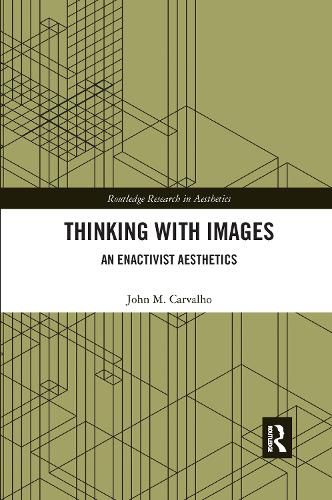Readings Newsletter
Become a Readings Member to make your shopping experience even easier.
Sign in or sign up for free!
You’re not far away from qualifying for FREE standard shipping within Australia
You’ve qualified for FREE standard shipping within Australia
The cart is loading…






This book advances an enactivist theory of aesthetics through the study of inscrutable artworks that challenge us to think because we do not know what to think about them. John M. Carvalho presents detailed analyses a four artworks that share this unique characteristic: Francis Bacon’s Study After Velazquez’s Portrait of Pope Innocent X (1953), the photographs of Duane Michals, based on a retrospective of his work, Storyteller, at the Carnegie Museum of Art (2014), Etant donnes (1968) by Marcel Duchamp, and Jean-Luc Godard’s 1963 film Le Mepris (released in the United States as Contempt). Carvalho argues against the application of theory to derive appreciation or meaning from these artistic works. Rather, each study enacts an embodied cognitive engagement with the specific artworks intended to demonstrate the value of thinking about artworks that might be extended to our engagement with the world in general. This thinking happens, as these studies show, when we trust our embodied skills and their guide to what artworks and the world around us afford for the activation and refinement of those skills. Thinking with Images will be of interest to scholars working in the philosophy of art and philosophical aesthetics, as well as art historians concerned with the meaning and value of contemporary art.
$9.00 standard shipping within Australia
FREE standard shipping within Australia for orders over $100.00
Express & International shipping calculated at checkout
This book advances an enactivist theory of aesthetics through the study of inscrutable artworks that challenge us to think because we do not know what to think about them. John M. Carvalho presents detailed analyses a four artworks that share this unique characteristic: Francis Bacon’s Study After Velazquez’s Portrait of Pope Innocent X (1953), the photographs of Duane Michals, based on a retrospective of his work, Storyteller, at the Carnegie Museum of Art (2014), Etant donnes (1968) by Marcel Duchamp, and Jean-Luc Godard’s 1963 film Le Mepris (released in the United States as Contempt). Carvalho argues against the application of theory to derive appreciation or meaning from these artistic works. Rather, each study enacts an embodied cognitive engagement with the specific artworks intended to demonstrate the value of thinking about artworks that might be extended to our engagement with the world in general. This thinking happens, as these studies show, when we trust our embodied skills and their guide to what artworks and the world around us afford for the activation and refinement of those skills. Thinking with Images will be of interest to scholars working in the philosophy of art and philosophical aesthetics, as well as art historians concerned with the meaning and value of contemporary art.